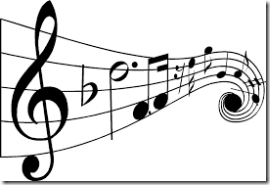Rhythm versus Tempo in Golf
A common symptom that golfers complain about is ‘Taking their range swing to the course’. They hit it perfectly on the range – but have trouble replicating that perfection on the course. In addition, more often than not, we are all a little too eager on the first tee – and need to slow things down a bit. The concepts of rhythm and tempo (in the golf swing) help address both these issues.
The Piano Analogy
Imagine you are learning a tune on the piano. The ‘tune’ is the RHYTHM – which notes come first, which second….and so on. The TEMPO is HOW FAST you play the tune. We all know that we can play the same tune at a faster pace (fast tempo) or a slower pace (slow tempo). The same reasoning applies to the golf swing.
Which is more important?
Without a doubt, rhythm. If your swing doesn’t follow the correct sequence (is not rhythmical), it doesn’t matter whether your tempo is slow or fast. If you do not sing (or play the piano) in tune , it doesn’t matter how fast or slow your rendition is. A fast incorrect swing will only amplify errors in your swing sequence.
A while back, a popular golf instruction book caused quite a sensation. Titled ‘Golf’s Last Secret Revealed’, it claimed to have discovered an essential TEMPO (strictly speaking, one of 3 possible tempos) that should, in itself, make you a better golfer (near professional, the book claims). Basically, if you took your club back within a certain number of ‘counts’ (1 Mississippi, 2 Mississippi…) and brought it back within a certain number of counts, you were set. It provided a music ‘track’ to keep counts of the beats. There was little mention of grip, posture, weight distribution, coiling around your spine or any of the core golf fundamentals.
Perhaps for an advanced golfer, who has mastered the setup and the basics of the golf swing, there may be some value to building a consistent tempo – simply by listening to a tempo ‘track’. However, I feel that beginners will not only not benefit, but will hamper their progress as a golfer without focusing on the fundamentals of grip, posture and stance.
For reference purposes, the book is shown below.
Building RHYTHM (the Pitching Wedge or 9 iron)
To build rhythm, one must start with one of the shortest clubs in your bag (either PW or 9 iron works best…avoid Sand Wedge or Gap Wedge).
The central thing to realize is that once you are hitting it flush with your pitching wedge (or 9 iron), you will hit it flush with your driver (and any other club) – provided you follow the same RHYTHM as the pitching wedge. In fact, when you set up with your driver, before swinging, imagine that you are about to swing your pitching wedge. This will automatically inform your brain to take the club back in a certain manner. You’ll be amazed at how easily the driver goes back and comes back down.
The key to all this amazing stuff is your pitching wedge (or 9 iron) – and practicing till you’ve dug up the earth – half way to China. Take a large bucket of balls – and instead of switching clubs – use only your PW (or 9 iron).
As you go through the bucket, you will find a smooth-ish swing, making near perfect contact every time with your short iron. Now, trick your brain – and pick up a longer club (try a 3 wood). Setup correctly and swing the 3 wood (since you just hit a bucket of balls with a short iron, you are most likely going to swing at the same tempo and same rhythm). Observe how effortless the 3 wood swing was.
Building TEMPO (the 3 wood)
While Tempo may be less important than rhythm, it is nevertheless, important. The one unique thing about tempo is that – most of us have an ‘innate’ tempo. An ingrained speed at which we do things – all things – and swinging a club is just one of those things. It is hard to change this ingrained tempo. The trick is to understand the relationship between TEMPO and RHYTHM- to ensure that even though our tempo may be quick, as long as it is rhythmical, nothing can go wrong.
Still , for those days when you have had a little extra caffeine and are needing to slow down your tempo, there is a drill that I can recommend (I learnt this from a coach in India, but later found out that Davis Love the third also used this drill).
Take a 3 wood, tee up the ball – and setup to the ball. The idea is to hit the ball no further than 50 yards. That’s right – just 50 yards with your 3 wood. This forces you to slow everything down – but you still need to sequence your swing correctly (still need to make good contact with the ball). This drill is great for slowing you down before a round of golf. This, in itself, is a useful drill (repeat it 5 to 10 times). However, if you would like to take it a step further, now hit the same club –100 yards – instead of 50. Then 150. This will teach you to increase your tempo without losing your rhythm. Take the same tempo to the golf course, and you may be amazed at the results.
Summary
People often use ‘Rhythm’ and ‘tempo’ interchangeably. Not only are they different ( conceptually ), but RHYTHM stands out as far more essential – and as a pre-requisite for a sound golf swing. If rhythm comes first, tempo follows.
This post discusses different methods for developing a rhythmic golf swing – and also slowing down your tempo on the first tee.

Leave a Reply